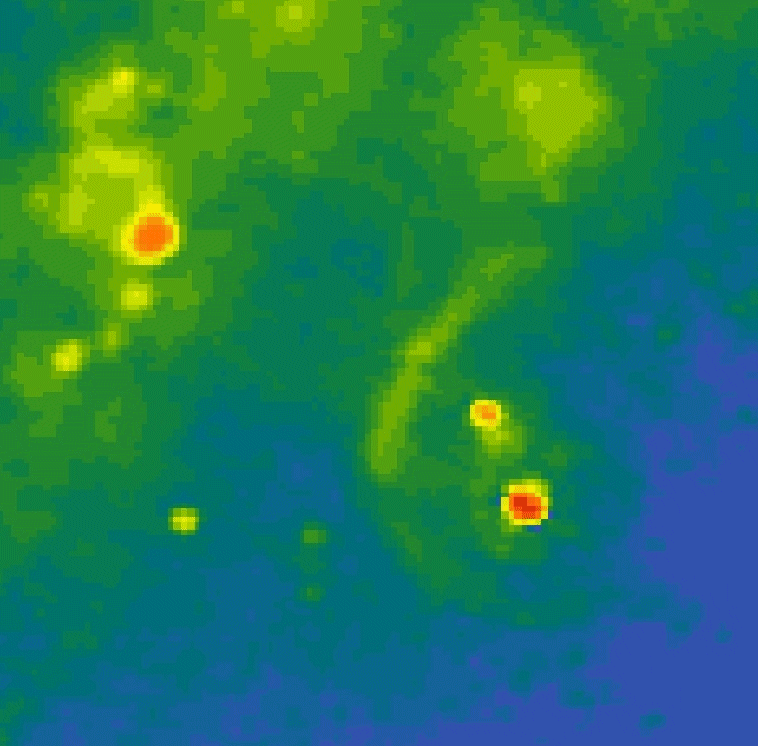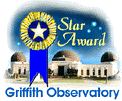 Credits
|
The false-color image to the left, created by a 25-m telescope in Germany, shows what the Orion constellation looks like at radio wavelengths. The stronger the radio waves, the redder the color.
Astronomers now know that the strong radio waves in this image are coming from areas where the hydrogen, which makes up most of the interstellar gas, is ionized. The bright, young, and hot stars that havehttp://www.stargazingadventures.org/StarAward.html recently formed emit lots of ultraviolet light. It is the ultraviolet light from these stars that ionizes the atomic or molecular gas. The ionized regions in this image include the Orion, Rosette and Cone nebulae as well as the Horsehead and MonR2 regions and the Lambda Orionis ring that you saw at the top of the infrared and molecular images. Almost all of the objects in this image are due to the recent star formation. |

